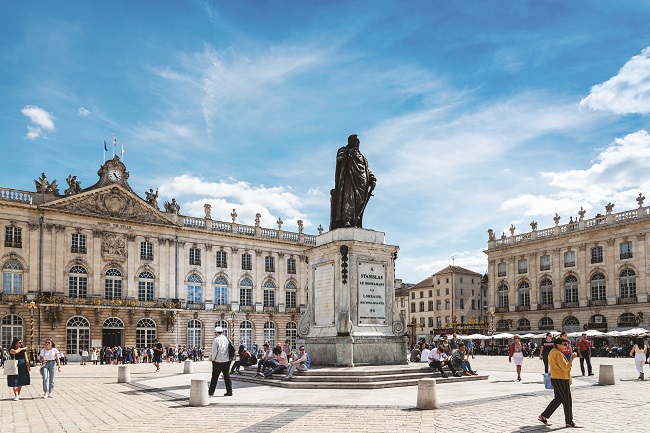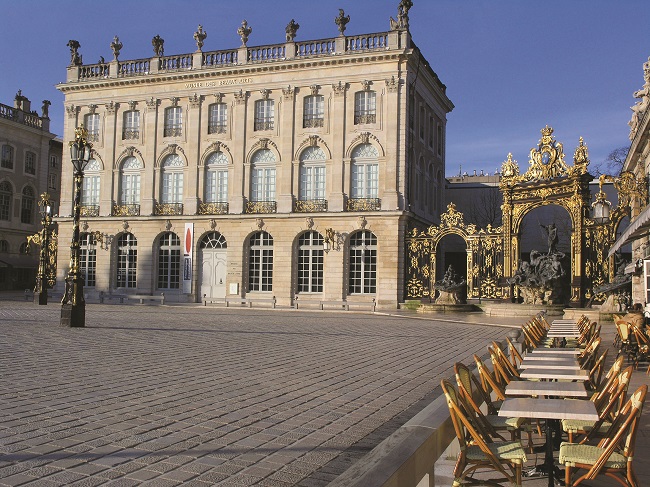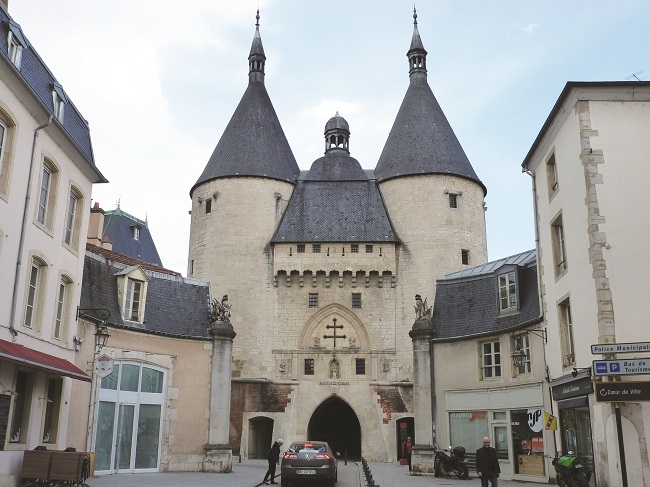City Breaks in France: Nancy

In the historic Duchy of Lorraine, enjoy Nancy, one of the finest cities in Europe, laced in Golden Gates, medieval lanes and stunning Art Nouveau
After the fall of the Carolingian Empire in the ninth century, Lotharingia (of which Lorraine was part) became a ‘middle kingdom’. A little later, Lorraine went on to become an independent Duchy, yet little is known of its capital, Nancy, until the end of the 11th century when the castle is mentioned as guarding a trade route from Marseille and Lyon to Trier. Despite wars and natural disasters, the town continued to grow with its own fortifications.
In 1477, René II, the young Duke of Lorraine, defeated invaders led by Charles the Bold of Burgundy. Nancy flourished as the capital of Lorraine and in the late 16th century, Duke Charles III decided to create a New Town to the south, on a grid pattern, and extend defences all around. The French occupied the Duchy during the Thirty Years’ War but Lorraine regained its independence in 1697 until further disruptions.
Then came the Age of Enlightenment and the tale of an exiled Polish King who would become the last Duke of Lorraine and its most illustrious benefactor. Stanislas Leszczynski was the father-in-law of King Louis XV, who in 1737 granted him the Duchy which was to be returned to France on his death. Despite being 60 already, for the next 29 years Stanislas cared for the poor, soup kitchens and all, and cleared the unhealthy marshlands between the old and new towns, linking them with a magnificent architectural complex to express his gratitude to the French King. What he left behind is a World Heritage site like no other.

The fine arts museum of Nancy © Solange hando
La ville royale
“In Nancy, all roads lead to Place Stanislas,” said my guide, and there it was, a straight walk from the railway station, framed by gilded wrought iron gates by Jean Lamour, enhanced with emblems, crown, fleur de lys and a rooster. Stretching 100m by 125m, Place Royale (renamed Stanislas) was designed by the architect Emmanuel Héré de Corny, the most impressive of its classical buildings being the Hôtel de Ville, the Grand Hotel, the Opera House and the Fine Arts Museum. Golden gates also adorn the two fountains, by Nicolas Guibal, of Neptune and his wife Amphitrite, near the Triumphal Arch, which glorifies the ‘Victorious and Peaceful King’. During the French Revolution, the king’s statue was destroyed and today ‘Stanislas the Benefactor’ looks across the square where convivial café terraces beckon with a glass of wine or a cappuccino.
Step through the Triumphal Arch and beyond the next golden gates, you reach Place Carrière, the former jousting ground, now an elegant tree-lined avenue leading towards the Palace where the French governor used to check the Duchy’s affairs. Marvel at the classical façade, the hemicycle colonnade and
the flowing decorations. It’s a good place to sit in the shade, away from the tour groups. One of my favourite spots is the Place de l’Alliance, off Rue Sainte-Catherine, which is named after a French-Austrian treaty and is the third UNESCO square in the royal town. Graced by a ‘rivers fountain’ recalling Bernini’s in Rome, it’s a quiet place, but peep through a window or a half-open door and you will spot stylish stairways and wrought iron work, especially at number 8 where Héré resided.

Porte de la Craffe, Nancy © Solange Hando
The old town
The Royal Town holds you spellbound yet just a few steps away, the lofty basilica of Saint-Epvre stands on the medieval square. Wander through the winding lanes and you may find yourself tempted by a ‘boutique lorraine’, although I prefer the Sunday market for local cheese, honey, pastries and Mirabelles, when in season, and the ‘Rue Gourmande’ (officially Rue des Maréchaux) for its cosy restaurants. The humble Grande Rue ends at Porte de la Craffe, the 14th-century gate showing the double cross of Lorraine. Little remains of the 16th-century Ducal Palace but on its austere façade Duke Antoine is keeping watch. The Palace houses the Musée Lorrain, which is currently under renovation. Don’t miss the nearby Cordeliers Church, the resting place of ducal families, including Philippa de Gueldres, wife of René II, whose recumbent figure was sculpted by the famous Ligier Richier.
The Dukes always linger in the shadows but the old town has other surprises: here a gurgling fountain, there a secret courtyard, a burst of flowers and pots, a stylish dwelling or a private mansion to sweep you off your feet. Look out for the U-shaped 18th-century Hôtel des Loups and Hôtel d’Haussonville, draped in Gothic and Renaissance features.

La rue Gourmande in Nancy © Solange Hando
Nouveau Nancy
Around 1900 a new form of art swept across the city, galvanised by local artist and designer Émile Gallé. They called it Art Nouveau, which, inspired by the natural world, brought together art and industry to produce beautiful things. In the prestigious Nancy School, members could collaborate on the same project, each specialising in his own design or material, Gallé for ceramics and glass, Daum for crystal, Majorelle for furniture and so on. Some of the best examples are displayed in the Musée de l’École de Nancy (on Rue du Sergent Blandan), while more architectural gems greet you along the streets around the Sainte-Marie Park and Saurupt areas (the latter boasts Art Deco too), as well as across the town centre at my personal favourite for décor and food, Brasserie Excelsior, near the train station.
Worn out by all the sightseeing? Take a break along the River Meurthe or the Canal de la Marne au Rhin, or head to the Pépinière, the city’s largest park bordering Place Stanislas. With a rose garden, bandstand, fountain, flowers and trees, this ‘Royal Nursery’, created by Stanislas, is the perfect place to relax before you leave the dazzling City of the Golden Gates.
From France Today magazine
Lead photo credit : The truly magnificent Place Stanislas in the heart of Nancy, which was once the capital of the Duchy of Lorraine © shutterstock
Share to: Facebook Twitter LinkedIn Email
More in city breaks in France, city guide, Lorraine
Leave a reply
Your email address will not be published. Required fields are marked *



